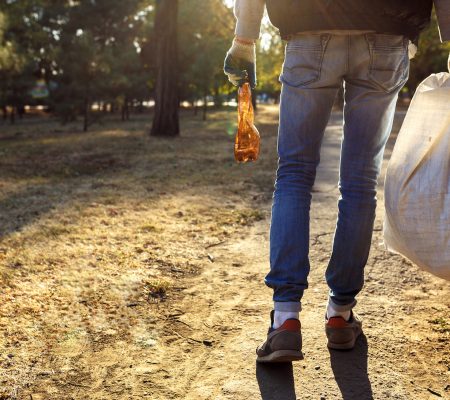Many consequences of littering are obvious.
Wild animals and pets may mistakenly consume or get tangled in it. Littering on roads can cause dangerous, even deadly, traffic accidents. Discarded items can block storm drains and pollute waterways, and attract pests and disease. Plus, it just looks nasty.
Studies have shown that litter can also have lasting social and economic impacts on communities. Higher volumes of litter correlate with higher crime rates and lower home values. Communities besieged by a litter problem may also have difficulty attracting new businesses, residents and visitors. It’s impossible to tell when litter is more of a cause or an effect in these situations; likely, it’s a bit of both, and only one factor among many. It is, though, a factor we can all do something about.
Consider these littering statistics before tossing that candy wrapper out the window.
- People are more likely to litter where other litter is present. (Source: KAB)
- The presence of litter can negatively impact home values in a neighborhood. 93% of homeowners report that litter would influence their decision to to buy a home. (Source: KAB)
- Communities with lots of litter have a harder time attracting businesses and investment. (Source: KAB)
- The 2011 American State Litter Scorecard ranked Indiana as the 45th worst state for littering. (IN.gov) Come on, guys.
- The public and private costs of cleaning up litter amount to $11.5 billion annually. (Source: KAB) That’s money that could go toward economic development, community programs or other environmental initiatives.
- It takes 10 to 12 years for a cigarette butt to decompose. (IN.gov)
When one part of an ecosystem is compromised, the entire machine suffers and degrades over time. Communities that respect their environment by not throwing trash at it or on it are more likely to protect their environment all around, including its air quality. Additionally, when public services like DPW have to drive around the city and clean up litter, it expends resources and impacts air quality through added emissions.
Here are three things you can do to help keep litter off the ground and pollution out of our air:
- Set a good example. People are less likely to litter in areas where litter is not already present. Hold on to wrappers and other waste until you find a recycling or garbage can.
- Organize or participate in a local cleanup. See how you can make a difference in your neighborhood.
- Remember that recycling is an option. Much of the material we could be recycling ends up in landfills.
This is our city. If we work together, small actions can lead to a big impact. Visit It’s My City to get involved in making Indianapolis clean, green and beautiful.
